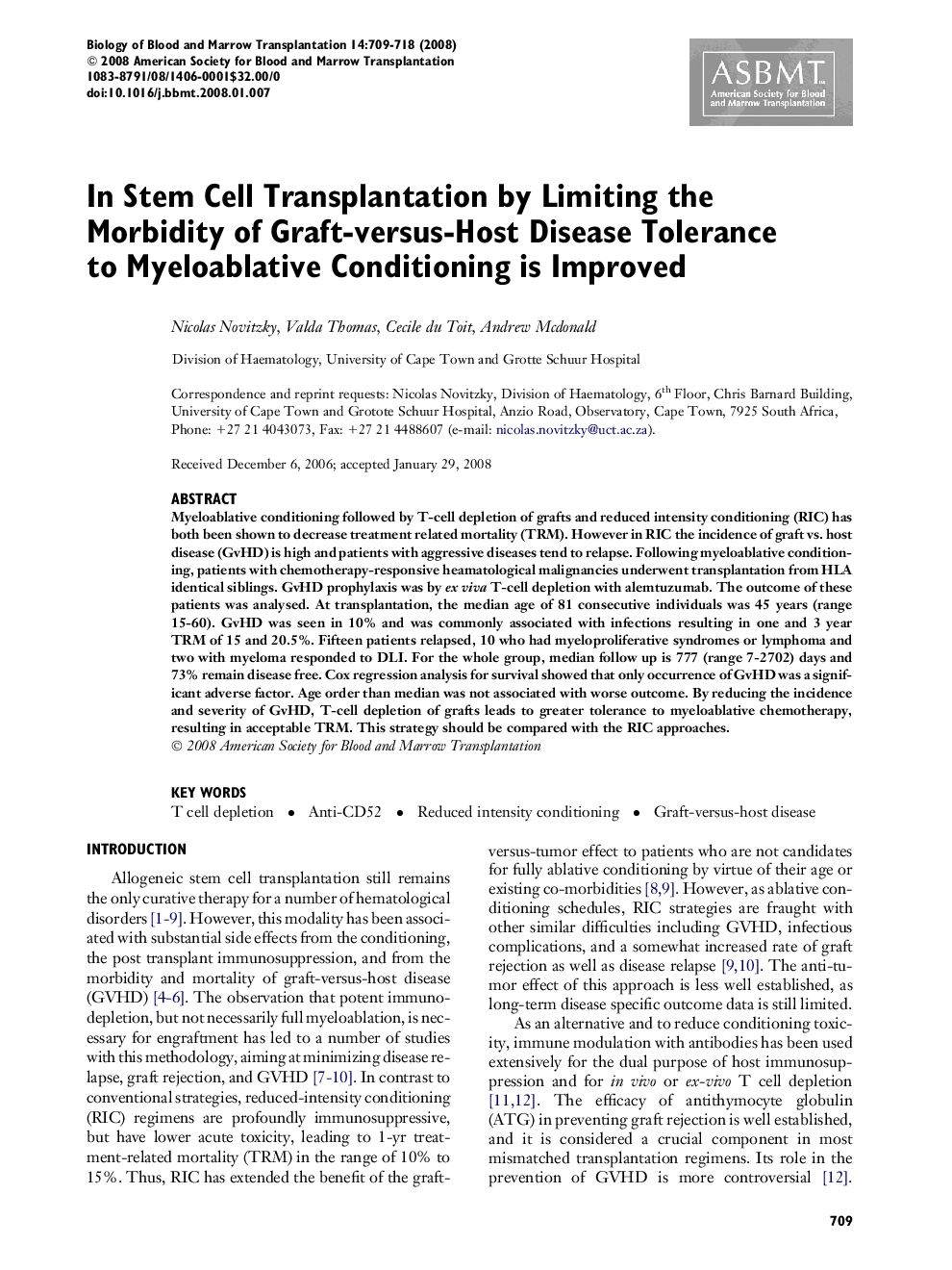| Article ID | Journal | Published Year | Pages | File Type |
|---|---|---|---|---|
| 2104100 | Biology of Blood and Marrow Transplantation | 2008 | 10 Pages |
Myeloablative conditioning followed by T-cell depletion of grafts and reduced intensity conditioning (RIC) has both been shown to decrease treatment related mortality (TRM). However in RIC the incidence of graft vs. host disease (GvHD) is high and patients with aggressive diseases tend to relapse. Following myeloablative conditioning, patients with chemotherapy-responsive heamatological malignancies underwent transplantation from HLA identical siblings. GvHD prophylaxis was by ex viva T-cell depletion with alemtuzumab. The outcome of these patients was analysed. At transplantation, the median age of 81 consecutive individuals was 45 years (range 15-60). GvHD was seen in 10% and was commonly associated with infections resulting in one and 3 year TRM of 15 and 20.5%. Fifteen patients relapsed, 10 who had myeloproliferative syndromes or lymphoma and two with myeloma responded to DLI. For the whole group, median follow up is 777 (range 7-2702) days and 73% remain disease free. Cox regression analysis for survival showed that only occurrence of GvHD was a significant adverse factor. Age order than median was not associated with worse outcome. By reducing the incidence and severity of GvHD, T-cell depletion of grafts leads to greater tolerance to myeloablative chemotherapy, resulting in acceptable TRM. This strategy should be compared with the RIC approaches.
